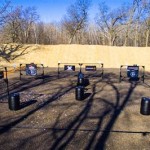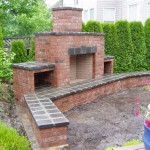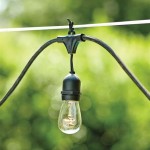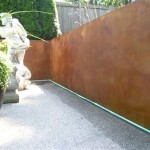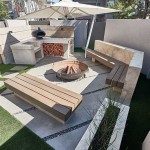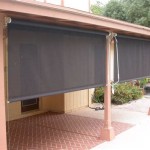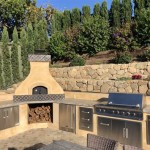Types of Outdoor Wood Paneling
Outdoor wood paneling can dramatically enhance the aesthetic appeal and structural integrity of a building's exterior. Selecting the appropriate type of wood paneling requires careful consideration of factors such as climate, budget, desired appearance, and maintenance requirements. A diverse range of wood species and paneling styles are available, each offering unique properties and installation considerations.
Wood paneling, typically installed as siding or accent features, provides both a visual upgrade and a protective layer against the elements. The choice of wood directly impacts the paneling's resistance to moisture, insects, and decay, as well as its long-term durability. Proper installation techniques are also crucial to ensure the paneling performs optimally and withstands outdoor exposure for years to come.
The following sections will detail various types of wood used for outdoor paneling, focusing on their characteristics, benefits, and potential drawbacks. It will also explore popular paneling styles and considerations for finishing and maintenance.
Wood Species Commonly Used for Outdoor Paneling
The selection of wood is paramount when choosing outdoor paneling. Different wood species possess varying levels of natural resistance to decay and insects, affecting their suitability for outdoor applications. The grain pattern, color, and density of the wood also contribute to the overall aesthetic and structural performance of the paneling.
Cedar: Cedar is a popular choice for outdoor paneling due to its natural resistance to rot, decay, and insects. It contains oils that act as a natural preservative, making it a durable option even in damp climates. Cedar paneling is lightweight, easy to work with, and offers a beautiful, reddish-brown hue that weathers gracefully to a silver-gray color over time. There are several varieties of cedar, including Western Red Cedar, Eastern White Cedar, and Alaskan Yellow Cedar, each with slightly different properties. Western Red Cedar is particularly prized for its dimensional stability and rich color.
Redwood: Similar to cedar, redwood is prized for its natural resistance to decay and insects. It's a durable and beautiful wood with a distinctive reddish-brown color. Redwood is also relatively lightweight and easy to work with. However, redwood harvesting is subject to environmental concerns, and sourcing sustainably harvested redwood is crucial. Redwood heartwood, the inner part of the tree, is significantly more resistant to decay than sapwood, the outer layer. Therefore, selecting redwood paneling with a high percentage of heartwood is essential for optimal performance.
Cypress: Cypress is another excellent option for outdoor paneling, known for its natural resistance to decay and insects. It's a durable wood with a distinctive, slightly oily texture. Cypress heartwood is highly resistant to moisture and rot, making it suitable for areas with high humidity or direct exposure to water. Cypress can range in color from light yellow to reddish-brown and accepts stains and paints well.
Pine: Pine is a more affordable option compared to cedar, redwood, and cypress. However, it is not naturally resistant to decay and insects and requires treatment with preservatives to be suitable for outdoor use. Pressure-treated pine is commonly used for outdoor applications, where the wood is impregnated with chemicals to protect it from rot and insect damage. Pine paneling can be painted or stained to achieve the desired aesthetic. The cost-effectiveness of pine makes it a viable option for projects with budget constraints, but it requires regular maintenance and periodic re-treatment to ensure its longevity.
Douglas Fir: Douglas fir is a strong and durable softwood that can be used for outdoor paneling. While not as naturally rot-resistant as cedar or redwood, it can be treated with preservatives to improve its resistance to decay and insects. Douglas fir has a distinctive grain pattern and a warm, reddish-brown color. It's often used in applications where structural strength is a primary concern. Douglas Fir requires proper sealing and finishing to prevent moisture absorption and maintain its appearance.
Paneling Styles and Installation Considerations
Beyond the choice of wood species, the style of paneling contributes significantly to the overall appearance and performance of the exterior cladding. Different paneling styles offer varying aesthetics and require specific installation techniques.
Bevel Siding: Bevel siding, also known as clapboard, is a traditional and widely used paneling style. It consists of long, narrow boards that are installed horizontally, with each board overlapping the one below it. This creates a distinctive shadow line and provides excellent weather protection. Bevel siding is relatively easy to install and can be used with various wood species. Proper overlap and secure fastening are crucial to prevent water infiltration. The angle of the bevel can vary, influencing the appearance of the siding.
Shiplap Siding: Shiplap siding features rabbeted edges that overlap to create a tight, interlocking joint. This creates a smooth, flat surface with a minimal gap between boards. Shiplap is often used for both interior and exterior applications and offers a clean, modern look. The interlocking design provides excellent weather resistance and helps to prevent water penetration. Shiplap siding is typically installed horizontally, but it can also be installed vertically for a different aesthetic.
Tongue and Groove Siding: Tongue and groove siding features interlocking edges, with a tongue on one edge and a groove on the other. This creates a tight, seamless joint that provides excellent weather protection and a smooth, uniform surface. Tongue and groove siding can be installed horizontally, vertically, or diagonally, offering versatility in design. The interlocking design allows for easy installation and helps to prevent warping or cupping of the boards.
Board and Batten Siding: Board and batten siding consists of wide vertical boards with narrow strips of wood (battens) covering the joints between the boards. This creates a rustic, textured look that is popular for barns and country-style homes. Board and batten siding provides excellent weather protection and is relatively easy to install. The battens help to prevent water infiltration and add structural stability to the siding. The width of the boards and battens can be varied to create different visual effects.
Rain Screen Systems: Rain screen systems are a more advanced and effective method of installing wood paneling. They involve creating a ventilated cavity behind the paneling, allowing air to circulate and dry out any moisture that penetrates the siding. This significantly reduces the risk of rot and decay and extends the life of the paneling. Rain screen systems require careful planning and installation, but they provide superior performance and durability, especially in wet climates. The air gap behind the paneling also helps to improve the insulation of the building.
Finishing and Maintenance of Outdoor Wood Paneling
Proper finishing and regular maintenance are crucial to protect outdoor wood paneling from the elements and prolong its lifespan. Finishes provide a protective barrier against moisture, UV radiation, and insects, while regular cleaning and maintenance help to prevent decay and maintain the paneling's appearance.
Sealants and Primers: Applying a sealant or primer to the wood before painting or staining is essential to protect it from moisture absorption and improve the adhesion of the finish. Sealants penetrate the wood fibers and create a water-resistant barrier. Primers provide a smooth, even surface for the paint or stain to adhere to. Selecting a high-quality sealant and primer specifically designed for outdoor use is crucial for optimal performance.
Paints: Painting wood paneling provides a durable and long-lasting finish that protects it from the elements. Exterior-grade paints are formulated to withstand UV radiation, moisture, and temperature fluctuations. Choose a paint color that complements the architectural style of the building and consider using a light color to reflect sunlight and reduce heat absorption. Regularly inspect the paint for cracks or peeling and touch up any damaged areas to prevent moisture from penetrating the wood.
Stains: Staining wood paneling enhances the natural beauty of the wood grain and provides a protective layer against the elements. Stains penetrate the wood fibers, providing long-lasting color and protection. Choose a stain that is specifically designed for exterior use and that contains UV inhibitors to prevent fading. Semi-transparent stains allow the wood grain to show through, while solid stains provide a more opaque finish. Reapply stain every few years to maintain the color and protection.
Oils: Applying wood oils, such as linseed oil or tung oil, can help to protect and preserve wood paneling. Oils penetrate the wood fibers and create a water-resistant barrier. Oils also enhance the natural beauty of the wood grain and provide a rich, warm finish. However, oils require regular reapplication, typically every year or two, to maintain their protective properties. Oiling is often preferred for naturally durable woods like cedar and redwood, where the goal is to enhance the wood's natural beauty rather than completely covering it with paint or stain.
Cleaning: Regular cleaning is essential to remove dirt, mildew, and other debris from wood paneling. Use a soft brush and mild soap to clean the paneling. Avoid using harsh chemicals or power washers, as these can damage the wood. Inspect the paneling for signs of mold or mildew and treat any affected areas with a mildewcide. Rinse the paneling thoroughly with clean water after cleaning.
Maintenance: Regularly inspect wood paneling for signs of damage, such as cracks, rot, or insect infestation. Repair any damaged areas promptly to prevent further deterioration. Replace any rotted or damaged boards. Recaulk any gaps around windows, doors, and trim to prevent water infiltration. Trim any vegetation that is growing too close to the paneling, as this can trap moisture and contribute to rot.
The selection of appropriate wood species, paneling styles, and finishing techniques, coupled with consistent maintenance, will ensure the longevity and aesthetic appeal of outdoor wood paneling. These factors are essential for achieving a durable and visually pleasing exterior for many years.

6 Types Of Exterior Wood Siding The Family Handyman

What Is The Best Wood Siding

6 Types Of Exterior Wood Siding The Family Handyman

8 Exterior Wall Cladding Materials And Their Pros Cons You Should Know Hosung Wpc Composite

Wood Vs Vinyl Siding Why A Premium Hardwood Is Best

Wood Siding The Pros And Cons

The Ultimate Guide To Wood Siding Craftsman Blog

6 Types Of Exterior Wood Siding The Family Handyman

Modern Exterior Wood Siding Cladding That We Love Brick Batten

Techno Fiber Wood Exterior Wall Cladding Panel Louver Type Thickness 26mm At Rs 275 Square Feet In New Delhi
Related Posts

